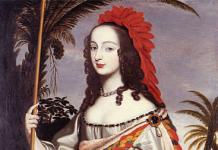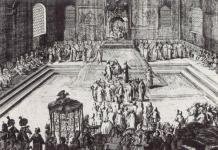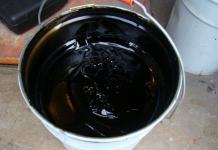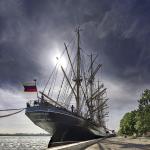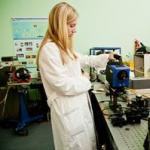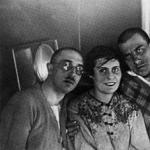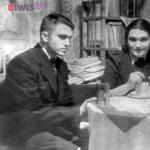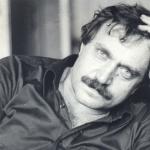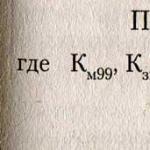The Great One headed to Europe in March 1697 to seek allies in the war with the Ottoman Empire. After studying artillery in Prussia, he arrived in Holland. Here he became acquainted with Dutch architecture and painting, and then invited foreign sculptors and artists to Russia. For example, he ordered a painting from Jan Tytekuren, and later accepted him into service at the Armory. The account books of the Armory Chamber mention the following: “Given to the arap Jan Tyutekuren, who was accepted into the service of the great sovereign in the Armory Chamber as a painter, for the work of the table, which he made by order of the great and plenipotentiary ambassadors with Austin work, and for the tree and for the box and for gold and for paints for copper punches and rings 44 efimka.”
According to contemporaries, Peter I did not spend even a few hours in idleness. He got up at 4 a.m. to get to the shipyard, the hospital, a lecture, or the botanical garden.
Conversation of Peter I in Holland. (wikipedia.org)
The ladies noted the pleasant appearance of the Russian Tsar, but at the same time complained about his lack of good manners. “The Tsar is a tall man with a beautiful face, well-built, with great quickness of mind, quick and decisive in his answers, it’s only a pity that with such natural advantages he lacks complete secular sophistication,” wrote Princess Sophia of Hanover of the Palatinate.

Sophia of Hanover. (wikipedia.org)
The Italian singer Philip Balatri did not skimp on praise, talking about the appearance of the Russian sovereign: “Tsar Peter Alekseevich was tall, rather thin than plump; His hair was thick, short, dark brown, his eyes were large, black, with long eyelashes, and his mouth was well shaped. The facial expression is beautiful, inspiring respect at first glance.” Subsequently, Balatri moved to Russia.
One and a half pounds of lamb
Peter I spent three months in England. There were no feasts here, which literally made the owners of drinking establishments rich. One of the invoices stated that twenty Russians were given half a lamb, ten chickens, cognac and mulled wine for breakfast. The lunch looked even more impressive - 16 kilograms of lamb, 12 bottles of red wine and, again, several chickens. In 1719, rumors about these feasts forced the Prussian queen to give an order: all valuables were to be removed from the palace. The Russian emperor came here with his wife and decided to give himself a gift by taking several ancient figurines.

Peter I in Zaandam by Dutch masters. (wikipedia.org)
In England, Peter I studied the structure of the political system and came to the following conclusion: “It is fun to listen when subjects openly tell their sovereign the truth; This is what we need to learn from the English.”
In 1716 the ruler again went to Europe. He visited Paris, Amsterdam, Danzig and Hamburg. In Paris, Peter visited a cloth factory, the French Academy of Sciences, a foundry, and met scientists and doctors.
Unfortunately, only fragmentary, sparse, and sometimes contradictory information has been published about the construction of ships for Russia during the Peter the Great era at Dutch shipyards. Some works indicate only 14 ships of five classes (five battleships, the same number of frigates, two yachts, a tornshout and a galley) built in Holland (except for the English yacht “St. Catherine”). However, archival materials indicate that many ships were not only built far from the Russian shores, but also underwent various types of repairs there.
The construction of ships for Russia in Holland was first mentioned in documents in 1693, when young Peter, during his first visit to Arkhangelsk, ordered “to issue an order for the construction of a 44-gun frigate and a war galley to the Dutch shipbuilder, shipyard owner Nikolai Witsen” (Witzen). This order was of great importance for the domestic fleet, since its own naval shipbuilding was taking only its first steps at the newly created Solombala shipyard in Arkhangelsk. This is evidenced by the lively correspondence of Peter I with the Duma clerk A. A. Vinius. The 44-gun frigate "Holy Prophecy" cannot be considered a powerful warship: its small-caliber guns were located only on the upper deck, under which the cabins and cargo hold were located. As a far-sighted politician, Peter I understood perfectly well that it was pointless to try to immediately build large combat ships without having a sufficient number of domestic personnel, so he paid attention to the construction of small, maneuverable ships - galleys, galliots and yachts. A 32-oar “galley” or galley (length 38.1, width 9.2, side height 3.8 m), which was delivered disassembled on special firewood “together with the master” in 1695 from Amsterdam to the village of Preobrazhenskoye near Moscow , served as a model for the construction of 22 galleys under the leadership of Peter I and the Arkhangelsk governor F.M. Apraksin; They played, as we know, a decisive role in the repeated siege of Azov and formed the striking force of the Russian fleet during the capture of this Turkish fortress on July 18, 1696. Thus, it was possible to clarify the year of delivery of the first Dutch galley to Russia, which was mistakenly considered 1694.
Beginning in 1697, Peter sent several groups of Russian young people to study in Holland, and then England and Venice. He himself went abroad together with the Preobrazhenists A.D. and G.A. Menshikov, F.M. Sklyaev, F.S. Saltykov and others. At first, the Dutch government was lenient towards the king’s hobby and even gave him the 60-gun ship “St. Peter and Pavel" and a boat, in the construction of which Russian volunteers took part. When he made an official proposal to build ships for the Russian fleet, Holland responded with a polite refusal - she did not want, in addition to England and Sweden, to have another competitor in the Baltic Sea.
A long search made it possible to find a mention of only one iceboat, 9.8 m long, built in 1702 in Holland, which safely reached Arkhangelsk that same year. It is mentioned in one of the financial documents of Captain Christopher Brant to dignitary G.I. Golovkin “for the case of three yachts in 1717.” . Another mention dates back to 1710, when the Russian government managed to acquire a specially built “gilded transport”. Thanks to Russian diplomacy, the negative position of Holland regarding shipbuilding was replaced by a friendly one, since Sweden, whose privateers captured many merchant ships, was a more formidable rival for both states.
Peter studying shipbuilding in Holland (from an engraving by Weyburg)
After lengthy negotiations in Amsterdam, a second frigate was built for Russia, which arrived in St. Petersburg on June 27, 1711 on the day of St. Samson and therefore called “Samson”. The governor of Ingermanland A.D. Menshikov, who carried out this order through the Hamburg merchant Franz Popp, presented the ship to Peter I. The frigate was brought to the new Russian capital by Captain Klink, who managed to escape persecution by the Swedes. The arrival of “Samson” in St. Petersburg is recorded by archival sources.
In Saardam at the shipyard (from an 18th century engraving)
The surviving extract for 1712 “On the usual contracts that are concluded in Amsterdam, Sardam, Altona and Hamburg on the construction of ships” provides the exact dimensions of the ships and information about their readiness. The terms of payment for construction are not without interest. Thus, the last third of the amount was paid only after the ship was launched and everything necessary for its departure had been prepared. In addition, in accordance with these treaties, two or three ships were built and prepared for sailing within six months. Based on the table of requirements for materials for the construction of Russian ships, we can conclude that in 1712 - 1714. Three battleships were built at Dutch shipyards (60-gun Marlburg, 54-gun Portsmouth, 52-gun Devonshire), as well as a 36-gun frigate, 26-gun pram, 18-gun shnyava, 6-gun bombardier ship and finship ship.
According to the drawings sent by the Russian ambassador in The Hague to Prince B.I. Kurakin, it was planned to build six or seven battleships (length 38 - 40 m) in Holland and England, capable of carrying 18-pound guns on the lower deck. However, the British refused to help Russia, and the ships had to be built in Holland, and in smaller quantities and through intermediaries Robinson, Troy, Popp and others, led by Peter I's representative for foreign shipbuilding affairs, Christopher Brant. A letter from P. A. Romanov, addressed to B. I. Kurakin and dated November 1, 1713, has been preserved: “Contract to make three or four ships according to this drawing, having found a good English master, and it must be done in more than one place, for the sake of appearance on the underwear on the lower deck there are only 2 windows from the console chamber, but on the foredeck there is no need for a single one. Also, don’t make galleries and don’t decorate the latrine, but build one goal; do not make masts and rigging. .." . Lengthy negotiations followed with contractors for the delivery of ship timber and other materials. On March 9, 1714, B.I. Kurakin assured Peter I that all six ships would be ready for winter, but through the mediation of the merchant Troy, he managed to agree on the construction of only one 60-gun ship, which later received the name “Marlburg”. Only later, through the efforts of the Russian shipwright Osip Solovyov, whose name as a shipbuilder had not previously been mentioned, the construction of two more ships began - a 54-gun ("Portsmouth") and a 52-gun ("Devonshire").
Another Russian shipbuilder F. S. Saltykov also went abroad in June 1711, who managed to purchase a large number of ships and, in addition, help O. Solovyov and B. I. Kurakin in their affairs. Based on primary sources, it was also established that the launch of the Portsmouth took place on November 11, the Marlburg at the end of November, and the Devonshire on December 6, 1714, while F. F. Veselago lists one for all three ships date - November 1714. Osip Solovyov was building the third battleship "Waltenow" in Amsterdam, but it is not yet known whether he managed to complete the job. Documents indicate that in 1715 Kurakin sent Solovyov to Altona (Prussia); After returning, he began fitting out three launched ships, which they decided to send to Copenhagen under the guise of merchant ships under the protection of the English and Dutch squadrons. On April 26, 1715, Soloviev reported from Amsterdam that all three ships were “taken to depth.” However, about two more months passed before they arrived safely in Russia.
Subsequently, the construction of large ships in Holland had to be temporarily suspended for various reasons, mainly due to the difficulty of delivery in the conditions of the Northern War. And small ships for Russia continued to be built. A letter from Peter I to Vice Admiral K.I. Kruys from St. Petersburg dated November 22, 1715 has been preserved: “Having received this determination, at least, if it is no longer possible, to make 7 barges, 15 ropes, 9 boats per year, so that the masters don’t walk away in vain...”
Awarding the title of shipmaster to Peter in 1697 (from an 18th-century engraving)
Kurakin managed to organize the construction of these ships. From Amsterdam in 1719, the yacht Natalya, built in 1715, was delivered disassembled to St. Petersburg, which was assembled at the Admiralty Shipyard. At the end of 1715 - beginning of 1716. In Amsterdam, two boats were built and sent to Russia in the spring of 1716. One of them (length 11.6 m) was distinguished by rich walnut finishing and gilding. They had to pay for it in lead, the weight of which was equal to the weight of the ship. Another Dutch boat, structurally similar to the one built in 1702 (length 9.8 m), was delivered to St. Petersburg on the frigate “St. Mary” by the shipbuilder Carlimus Nekeman. The battleship Straford, which was carrying small Dutch ships, ran aground at the end of January 1716; With great difficulty, it was delivered to Amsterdam, where it was “laid down to the keel” to eliminate the leak, caulk it and paint it. In mid-February of the same year, another Russian battleship, the Yagudiel, was being repaired in the capital of Holland.
In 1717, ship's apprentice Philip Palchikov arrived in Holland and was tasked with organizing the construction of spiegel yachts, sloopboats and tornshouts. After some time, he sent a Spiegel yacht and a sloopboat to the Russian shores. To expand shipbuilding, Palchikov attracted shipwrights Peters and Grif, as well as one of the experienced blacksmiths from the East India shipyard. By May of the same year, two more spiegel yachts were built, and with the help of an additionally hired master Ren, a second sloopboat. On May 13, Peter I ordered Captain P.P. Bredahl to leave England for Holland to take a new tornshout, named after the capital - “Amsterdam”. On December 3, 1717, Russia entered into an agreement to build, at a lower price, three more spiegel yachts in Amsterdam and a boatdubel in Dart. The fact that the botdubel meant a sloopboat can be seen from the letter of B.I. Kurakin from The Hague dated February 7, 1718 to the Tsar. The names of previously unknown builders and the dimensions of the ships became known from a report dated February 1, 1719: “The yacht (length 17.5, width 5.6, height 2 m) was ordered to be built in October 1717 by masters Yakov and Jan Klosov, children Shvanov under the leadership of bass [ship master] Fanren, modeled on the yacht of crew master Fan Horn, which was completely built and dismantled, and then sent on the frigate “St. Mary” (“Jufau Maria”) from Amsterdam to St. Petersburg.”
In the summer of 1719, Kurakin received orders from Peter to build three gekbots in Holland. A lot of time was spent searching for contractors and construction sites. In the end, they signed a contract with Fanren; By the summer of the following year, the ships were built, but the first hookboat was captured by the Swedes, and the other two arrived safely in Russia only at the end of the summer of 1721.
Model of a two-deck ship made by Peter I
1720 was marked by the resumption of the construction of large ships for the Baltic Fleet. In mid-January, Peter I sent shipwright Davenport to Amsterdam to build three battleships, ordering Kurakin to provide him with all possible support. Cannons, anchors, sails and resin were brought from Russia, and masts from Riga. In March 1720, Davenport discovered in the drawing of the first battleship a significant deviation from the proportions of the English type - the waterline at the stern was half a meter higher than expected, which required alteration. For the same reason, the laying of two other ships was delayed. Only on August 25, Kurakin was able to assure the tsar that the 50-gun Amsterdam ship would be ready in December 1720, and the Rotterdam ship in April 1721. The second Amsterdam ship could not be laid down due to the protest of the Swedes to the Amsterdam magistrate. Details of the laying in 1719, construction and launching in 1720 of three Amsterdam frigates (Amsterdam-Galley, Dekrondelivde and Endracht) have not yet been found.
From a letter from K. I. Kruys to the Admiralty Board dated December 29, 1721, it is clear that in 1720 the Dutch built the “Tanaem” biscuit, which Peter I decided “not to use anywhere and keep it safe in Riga for an example or an extraordinary expedition ", which testified to the high design qualities of this vessel. A somewhat unusual contract in 1720 was concluded with the Dutch merchant Ivan Lubs in retaliation for the unauthorized departure of his wife from Moscow to Arkhangelsk in order to leave Russia, contrary to the agreement. At Peter I's proposal to build two 52-gun ships for the Baltic Fleet, the merchant offered one of his new ships, and agreed to build the other not in Hamburg, but in Amsterdam. Apparently, these ships were previously listed as of unknown construction, and their class was classified as frigates. In 1721, through the merchant Troy, the battleships Prince Eugene and Nystadt were completed. They were delivered to Russia with the help of two Arkhangelsk-built Russian battleships sent from Revel.
In total, six battleships, the same number of frigates, a bombardier galliot, a pram, a galley, a shnyava, a yacht, a transport, a fin ship, four ice boats, a tornshhout, nine spiegel yachts, five sloopboats, three hookboats and biscuits, and a total of 42 vessels of fifteen classes and types. The Dutch personally presented the king with a ship and a boat. In addition, Russia managed to acquire a battleship, two frigates and a gukor, as well as repair three battleships. All this speaks of a fairly large contribution of Dutch shipbuilding to the formation of the Russian fleet in the Baltic.
LITERATURE
Bestuzhev N. A. Experience in the history of the Russian fleet. L., 1961, p. 64.
Elagin S. History of the Russian fleet. Azov period. St. Petersburg, 1864, p. 20, 21, 45, 31, 19, 247.
Veselago F. F. Essay on Russian maritime history. Part 1., St. Petersburg, 1875, p. 244, 279, 355, 108, 112.
Veselago F. F. List of Russian military courts from 1668 to 1860. St. Petersburg, 1872, p. 692, 693, 76, 77, 12, 13, 76, 77, 280, 281, 192, 193.
Yakovlev I. I. Ships and shipyards. 2nd ed., L., 1973, p. 50.
-
Holland 17th century
In the second half of the 17th century, Holland, as the Republic of the Seven United Provinces of the Northern Netherlands was sometimes called, reached the zenith of its power and glory. It suffered from overpopulation - two million hardworking Dutch people were crowded into a tiny territory - but it was significantly superior to the rest of Europe in wealth, the number of cities, and the development of international relations. It is not surprising that the prosperity of this small state aroused amazement and envy among its neighbors, and envy often turned into greed. Certain national character traits helped the Dutch defend their independence. They had courage, tenacity, prudence, and when they had to fight (first against the Spaniards, then the British and finally the French), they did it with their inherent practicality and at the same time with selfless and high heroism. To protect their sovereignty and democracy, the people of two million maintained an army of 120,000 soldiers and the second largest navy in the world.
The success of Holland, like her freedom, was based on the tireless work of mind and hand. In most countries of Europe at that time, almost the entire population was tied to the land and was busy trying to feed itself in primitive ways and create at least a small surplus of food for the townspeople. And one Dutch peasant, managing to harvest a higher yield from each acre, get more milk and butter from his cows and meat from his pigs, was able to feed two of his fellow citizens who were not engaged in agriculture. Therefore, a good half of the Dutch population was freed up for other activities and rushed into commerce, industry and navigation.
Trade and navigation were the source of incredible wealth in Holland, whose inhabitants in the 17th century devoted themselves to these activities. The huge twin ports of Amsterdam and Rotterdam were built in the Rhine delta - where Europe's largest waterways - rivers and canals - met the world's oceans. Almost all movement of goods to or from Europe, along European shores or further overseas, passed through Holland. English tin, Spanish wool, Swedish iron, French wines, Russian furs, spices and tea from India, timber from Norway, wool from Ireland were delivered to the Netherlands, where they were disassembled, processed, woven, mixed, sorted and shipped further by waterways.
The need to transport all these goods made the Dutch almost a monopoly of world shipping. More than four thousand Dutch merchant ships sailed the seas and oceans - more than all other countries combined. The Dutch East India Company, founded in 1602, and the fledgling West India Company had offices in every major port in the world. Dutch sailors, combining the energy of pioneers with the prudence of merchants, conducted a tireless search for new markets and harbors. Ships continually scurried back and forth, mountains of goods grew, and with them came profits, and the Dutch trading republic grew richer and richer. To protect and develop trade in Amsterdam, new services were introduced: insurance was invented to reduce the burden of risk; banks and the stock exchange mastered credit operations and learned on an unprecedented scale to direct public loans to finance commercial enterprises; Printing houses printed contracts, freight bills and other standard forms necessary for establishing, concluding and communicating about many thousands of trade transactions. Wealth generated reliability, reliability generated credit, which served as a source of new wealth, which means that the power and glory of Holland continued to grow and strengthen. Holland was a true example of a rich and prosperous mercantilist state, a paradise for a merchant - it was not without reason that young people from all over Protestant Europe, and most of all from England and Scotland, came here to gain experience in trade and financial matters. It was to this brilliant Mecca of trade, navigation, culture that an impatient young Russian named Pyotr Mikhailov hurried through the German lands at the end of the summer of 1697.
In Pereslavl, Arkhangelsk, and Voronezh, Peter heard more than once from Dutch shipwrights and captains about Saardam. This town in IJ Bay, ten miles north of Amsterdam, was famous as the place where the best ships in Holland were built. About three hundred and fifty ships were built annually in fifty private shipyards in and around Saardam, and it was said that the people of Saardam were such dexterous and skilled craftsmen that it took them no more than five weeks from the moment of laying the keel to the launching of the ship. Over the years, the desire to go to Saardam and learn shipbuilding there became firmly rooted in Peter’s soul. That is why, while still passing through Germany, he told his companions that he intended to spend the entire autumn and winter in Saardam as an apprentice at the shipyard. Having approached the Rhine at Emmerich, near the Dutch border, the king became so impatient that he hired a boat and, leaving behind almost the entire embassy, set off straight down the river and did not even go ashore to rest in Amsterdam.
Early in the morning on August 18, Peter and six comrades were sailing along the canal to Saardam when they suddenly noticed a familiar figure. Gerrit Kist, a Dutch blacksmith who worked with Peter in Moscow, sat in the boat and caught eels. Peter, beside himself with joy at the sight of his acquaintance, let out a cry of welcome. Suddenly awakened from his reverie, Kist raised his eyes and, seeing that the Russian Tsar was sailing past, almost fell overboard. Peter ordered to land, jumped out of the boat, squeezed Kist in his arms and took an oath from him not to tell anyone that the Tsar was in Holland. Then, having learned that Kist lived nearby, Peter decided to stay with him. Kist protested hotly - his house was too small and modest for such a tenant and it would be better to turn to a widow, his neighbor. For seven florins, the widow agreed to move in with her father. Thus, after a few hours, Peter was safely installed in a tiny wooden house with two windows: two rooms, a tiled stove and behind a curtain - a stuffy niche for sleeping, so small that he could not properly stretch his legs. Two of his companions moved in with him, and four more found an apartment nearby.
The shipyards were closed on Sunday, but the excited Peter could not sit still. He went out into the streets, which were full of people enjoying a summer Sunday afternoon stroll. The news had already spread through the crowd that a boat with foreigners in outlandish costumes had arrived from afar, and people began to pay attention to Peter. In irritation, he tried to take refuge in the Otter Tavern, but even there everyone was staring at him. And this was just the beginning.
Work of Peter I at a shipyard in Holland
Early on Monday morning, Peter hurried to the shop on the dam and bought carpentry tools. Then he went to the private shipyard of Linsta Rogte and hired himself as a simple worker under the name Pyotr Mikhailov. He happily set to work - he trimmed logs with a hatchet and kept asking the master what the names of different objects were. After work, he went to visit the wives and parents of the Dutch shipwrights who remained in Russia, and explained that he worked side by side with their husbands and sons, proudly emphasizing: “After all, he is a carpenter himself.” Among others, he visited the widow of a Dutch carpenter who had died in Russia, to whom he had previously sent assistance of five hundred florins. The widow said that she often prayed that she would have the opportunity to express to the king how much this gift meant to her. Touched and very pleased, Peter stayed with her for dinner. On Tuesday, Peter, who dreamed of being on the water as soon as possible, bought a small rowing boat, having previously bargained like a true Dutchman. They agreed on forty florins, after which the seller and buyer went to a pub and drank a jug of beer. No matter how hard Peter tried to ensure that no one knew who he was, the secret quickly leaked out. On Monday morning, Peter ordered his comrades to change their Russian dress to the red jackets and white canvas trousers of the Dutch workers, but still the Russians were unlike the Dutch. The enormous height of Peter himself excluded any anonymity, so that by Tuesday all of Saardam knew that “a very important person” was in the city. And then an unfortunate incident happened: that same day, after lunch, Peter walked down the street, ate plums from a hat and treated them to the boys he came across, but there weren’t enough plums for everyone, and the children followed Peter. To get rid of them, he chased them for show, and they began throwing stones and dirt at him. Peter escaped by force at the Three Swans Hotel and sent for help. The burgomaster himself appeared, and Peter had to explain who he was and why he was here. The burgomaster immediately issued a decree prohibiting the Saardans from disturbing or offending “high-ranking persons who wish to remain unrecognized.” Soon the last doubts regarding the true status of the “high personage” were dispelled. One master from Saardam, who was then working in Russia, wrote home to his father that the Great Embassy was going to Holland and that the Tsar himself would probably be part of it under an assumed name. The Dutchman also reported signs by which it is easy to recognize the king: enormous height, twitching of the head and left hand, and a mole on the right cheek. On Wednesday, before my father had time to read this letter aloud in Pomp's barbershop, a big guy entered, exactly meeting all the signs. Like barbers all over the world, Pomp believed that the transmission of local gossip was part of his professional duties, and from then on he reported to everyone that the tallest of the foreigners was the Tsar of Moscow. To verify the veracity of this information, people flocked in droves to Kist, who was sheltering foreigners, who, as everyone knew, had met the tsar while in Russia. Kist, remaining faithful to his promise to Peter, stubbornly denied everything until his wife said: “Gerrit, I can’t do this anymore. Stop lying."
But despite the fact that Peter's secret was revealed, he still clung to his incognito - he refused an offer to dine with important merchants of Saardam and refused to taste a very special Saardam-style fish in the company of the burgomaster and his advisers. To both invitations, Peter replied that none of the important persons were available, and the king had not yet arrived. When one important merchant came to Peter’s companions and offered to move to a larger house, with a garden and fruit trees, which would be better suited for them and their owner, he heard in response that they were not noble people, just serfs, so the present They have enough housing.
The news of the king's appearance in Saardam instantly spread throughout Holland. Many people completely refused to believe it, and countless bets were made. Two merchants who met Peter in Arkhangelsk hurried to Saardam. On Thursday morning, finding him at home, they came out pale with excitement and announced: “Of course, this is the king, but how did he end up here? And why? Another Arkhangelsk acquaintance, coming face to face with Peter, said that he couldn’t believe his eyes - was the Tsar really in Holland, and even disguised as a simple worker? “As you can see,” said Peter and did not add anything else.
On Thursday he bought a sailboat for four hundred and fifty florins and installed a new mast and bowsprit on it with his own hands. On Friday, at sunrise, he was already plowing the waters of Hey Bay. That same day, after lunch, he was about to set sail again, but almost immediately noticed many boats setting off from Saardam to join him. In search of salvation, he directed the ship to the shore - and, having jumped out, he immediately found himself in the middle of another crowd of curious people, who pushed each other aside and stared at him, as if in a menagerie. The enraged Peter lightly hit one of the spectators on the head, to which the crowd responded with shouts: “Bravo! Marcier, you have been knighted!” By this time, so many people had gathered both in the boats and on the shore that Peter took refuge in the nearest inn and only when it got dark returned to Saardam.
The next day, Saturday, Peter gathered to observe an interesting and complex mechanical operation - with the help of rollers and gates they had to drag a large, newly built ship across the dam; So that the king could watch without the risk of being crushed by the crowd, a small area was surrounded by a fence. But by morning, the news that special preparations were being made attracted even more curious people: people were traveling even from Amsterdam. The crowd swept away all the barriers.
Seeing that the windows and even the roofs of nearby houses were filled with onlookers, the king decided not to go, although the burgomaster himself came to hurry him up. Peter said in Dutch: “Too many people. There are too many people."
Departure of Peter I from Saardam
On Sunday, new crowds poured out of Amsterdam, boat after boat. In desperation, the authorities doubled the guard at the Saardam bridges, but the crowd simply threw them back. All day Peter did not dare to stick his nose out the door. Locked in the house, beside himself with anger and frustration, he turned for help to the confused members of the city council, but they could not do anything about the flow of visitors, which was increasing every minute. Seeing no other way out, Peter decided to leave Saardam. His boat was moved from the usual pier closer to home. Peter, vigorously using his elbows and knees, managed to break through the crowd and climb onto the ship. The fresh wind that had been blowing since the morning now turned into a storm, but the king insisted on sailing: When he set sail, the guy in the rigging burst and the boat almost sank. And yet, despite the warnings of experienced sailors, Peter sailed and reached Amsterdam three hours later. And here he was already guarded by a horde of Dutch people, crowding in the hope of seeing him. Again, some people got it from the angry king, but in the end he managed to get into the hotel rented for the Grand Embassy.
That was the end of the visit to Saardam that Peter had dreamed about for so long. It was pointless to try to work in an open shipyard, or to walk freely around the town, so his stay here was reduced to a single week, although he had previously planned to spend several months in Saardam. Later, he again sent Menshikov and two others there to master the art of building masts, and he himself stopped by briefly a couple of times. But Peter had to study Dutch shipbuilding not in Saardam, but in Amsterdam.
Peter I in Amsterdam
During the time of Peter, Amsterdam was the largest port in Europe and the richest city in the world. Built at the confluence of the two rivers Amstel and Hey into the Zuid der Zee Bay, the city grew right on the water. To create a support for it, piles were driven into the swampy soil, and water flowed through the city in concentric circles of canals, of which there were five under Peter. Each canal was divided into two or three parts by smaller canals, so that in essence the entire city was afloat - an archipelago of seventy islands connected by five hundred steeply curved bridges under which ships and barges could sail. The city walls stretched along the inner bank of the outer canal, which also served as a natural moat.
The walls were fortified with powerful round watchtowers, which the practical Dutch, as usual, adapted for another purpose. At the tops of the towers they built windmills, and their rotating wings powered pumps that continuously pumped water from tiny patches of drained land. In front of the watchman standing on the city fortifications, a flat damp plain stretched out in all directions, dotted with large and small windmills as far as the eye could see, which tirelessly tried, figuratively speaking, to pump out the sea.
The buildings in this city testified to its wealth. From the port, Amsterdam appeared to be a city of red-brick church towers, symmetrical and purposeful, with the rounded shapes characteristic of Dutch buildings. The city fathers were extremely proud of their town hall and considered this structure, supported by 13,659 piles, to be the eighth wonder of the world. (Nowadays there is a royal residence there.) The city was full of breweries and sugar factories, tobacco warehouses, warehouses for coffee and spices, bakeries, slaughterhouses, iron foundries - everything had its own appearance and its own smell, and together they created a picture unusually rich and varied. But most eloquently about the wealth of Amsterdam were the solid houses built along the canals by successful merchants. These houses, slightly set back from the banks, shaded by elm and linden trees, remain the best decoration of modern Amsterdam. Very narrow (the amount of tax from homeowners depended on the width of the facade), they stretched upward for four or five floors and ended in an elegant, pointed pediment. From the ridge there was usually a beam protruding above the street, which was used to use a system of blocks to lift bulky furniture and other objects from the street into the house directly through the windows of the upper floors, since the stairs were too narrow for this. Looking down onto the street from the tall windows, the owner could see trees, ornate lanterns, and the shadowed, choppy water of the canals.
There was water everywhere, ships everywhere. Around every corner the visitor caught the eye of sails and masts. The port area looked like a forest of masts and yards. Pedestrians making their way along the canals had to step over rope bays, mooring rings, logs, barrels, anchors, even cannons. The whole city resembled a shipyard. And the port itself was crowded with ships of all sizes - small fishing boats with slanting sails, returning at noon from the morning fishing in Zuider Zee; large three-masted ships of the East India Company; seventy to eighty gun battleships. All of them were built in the characteristic Dutch manner: with rounded, raised bows, a wide hull and a flat bottom - like huge Dutch wooden shoes with masts and sails. There were also elegant ceremonial yachts with bulbous Dutch bows and large, elegant cabins at the rear, with leaded windows facing the stern. At the eastern end of the port, in a quarter called Ostenburg, there were huge shipyards and countless slipways on which ships of the Dutch East India Company were built. Here large, round, convex hulls of ships grew in rows - keels, frames, plating, deck after deck. Nearby, veteran ships returning from distant voyages were being repaired: first, their rigging and masts were removed, and then the hulls were dragged into shallow water and turned over on their side. There they lay, like beached whales, while carpenters and other workers scurried about, tearing away the thick carpet of sea plants from the bottom, replacing rotten planking, and filling the seams with fresh resin. It was here, in this special sailor’s corner of paradise, whose name is Amsterdam, that Peter came to spend four months here.
The Saardam crowds forced Peter to leave for Amsterdam, but he would still have to return there to meet his own Grand Embassy, which was about to arrive. The ambassadors were received royally at Kleve, not far from the border, and were provided with four large yachts and numerous crews. The city authorities of Amsterdam, realizing the importance this embassy could have for future trade with Russia, decided to give him extraordinary honors.
The reception included ceremonial visits to the town hall, the Admiralty and the shipyard, special performances in opera and ballet, a huge banquet with fireworks, which were to be launched from a raft on the Amstel. During these celebrations, Peter had the opportunity to talk with the burgomaster of Amsterdam, Nicholas Witsen. He was a wonderful man - wealthy, respected both for his merits and for his character; being an official, he was also a traveler, a patron of the arts, and an amateur scientist. One of his passions was ships, and he invited Peter to inspect his collection of ship models, navigational instruments and tools used in shipbuilding. Witsen had a soft spot for Russia, and for a long time, despite the abundance of other responsibilities and hobbies, he acted as an unofficial representative of Muscovy in Amsterdam. During the months that Peter spent in Amsterdam, the tsar and the burgomaster talked daily, and Peter complained to Witsen about the onlookers who annoyed him in Saardam. Is it possible to calmly work and study shipbuilding when a crowd of strangers is constantly staring at you? Witsen immediately came up with a solution: if Peter remained in Amsterdam, he could work on the docks and shipyards of the East India Company, which were surrounded by walls and inaccessible to the curious. Peter liked the proposal, and Witsen, as one of the directors of the company, undertook to settle everything. The next day, the board of directors of the East India Company decided to invite “a high-ranking person who is here incognito” to work in its shipyards, and for his convenience, give him the house of a rope maker, so that he could both live and work directly at the shipyard, without any interference In addition, in an effort to make it easier for him to master shipbuilding, the board of directors ordered the keel of a new frigate to be laid one hundred or one hundred thirty feet long - as the king pleased - and invited him and his entourage to participate in the construction from beginning to end and, along the way, become familiar with the techniques of the Dutch masters .
Work of Peter I at the shipyard in Amsterdam
That same evening, at the grand official reception that the city of Amsterdam gave in honor of the embassy, Witsen told Peter what decision the directors had made, Peter was delighted, and, no matter how much he loved fireworks, he barely sat through the end of the feast. When the last rocket exploded in the sky, the king jumped up and announced that he was immediately, right in the middle of the night, going to Saardam to get his tools in order to get to work in the morning. Neither the Russians nor the Dutch managed to dissuade him, and at eleven o'clock in the evening he boarded his yacht and sailed away. The next morning he returned and went straight to Ostenburg to the East India Company shipyard. He was accompanied by ten Russian volunteers, including Menshikov, and Peter sent the rest of the volunteers throughout the port to learn sailing and rope craft, mast making, rigging and ship navigation. Tsarevich Alexander Imeretinsky was sent to The Hague to master the art of artillery. Peter himself signed up as a carpenter for the shipwright Gerrit Klaas Pool.
The first three weeks were spent collecting and preparing the necessary timber and other materials. The Dutch, wanting to clearly show the king what was to be done, collected and laid out all parts of the ship for viewing before starting to lay the keel. Then, as these parts fell into place one by one, the ship quickly grew, like a huge model from a modern children's construction set. The hundred-foot frigate was named the Apostles Peter and Paul, and Peter worked with enthusiasm at every stage of its assembly.
Every day he came to the shipyard at dawn, carrying an ax and tools on his shoulders, like all the other workers. He did not allow any differences between them and himself and strictly forbade anyone calling him any title to his face or behind his back. During the afternoon rest, he liked to sit on a log and talk with sailors or shipbuilders - with anyone who called him “carpenter Peter” or “baas (master) Peter.”
He simply did not notice those who addressed him with the words “your majesty” or “sire” or even turned away and looked in the other direction. When two English nobles came to look with their own eyes at the Russian Tsar, who works as a simple carpenter, the master, in order to show them who the Tsar is, shouted: “Carpenter Peter, why don’t you help your comrades?” - and Peter, without saying a word, came up, put his shoulder under the log that several workers could not lift, and helped hoist it into place. Peter was very happy about the house that was provided to him. Several of his comrades lived with him - a kind of artel of artisans. At first, food for the king was prepared in the hotel where the embassy stood, but he did not like this order. He wanted to live a completely independent life. He did not have specific times for meals: he preferred to eat when he was hungry. Therefore, it was decided that they would supply him with firewood and food, and then let him do as he wanted. From then on, Peter himself lit the fire and cooked something for himself, like an ordinary carpenter.
But although he lived abroad, dressed and worked like an artisan, neither Peter himself nor his compatriots ever forgot who he really was and what enormous power he possessed. The tsar's governors in Moscow did not want to act without the knowledge and consent of the sovereign, so each mail delivered thick bundles of letters with requests for orders or favors, simply with news. At this shipyard, thousands of miles from his capital, Peter became much more interested in the affairs of the Russian administration than before. He demanded that he be informed of the smallest details of those very state affairs that he had once so blithely neglected. He wanted to know about everything that was happening in Russia. How do archers behave? How is the construction of two fortresses near Azov progressing? How are things going with the port and fortifications in Taganrog? What's going on in Poland? When Shein wrote about the victory over the Turks at Azov, Peter celebrated the event with a magnificent banquet for important Amsterdam merchants, followed by a concert and fireworks. Having learned about the decisive victory of Prince Eugene of Savoy over the Turks at Zenta, he reported this to Moscow and at the same time wrote that he had arranged another feast in honor of this success. Every Friday he tried to answer letters from Moscow, although, as he wrote to Vinius, “some are due to lack of time, and some are due to absence, and others are not corrected by Khmelnitsky (drinking).
However, one day Peter had to somewhat moderate his omnipotence: having learned that two embassy noblemen spoke disapprovingly of his behavior - they say, the tsar should have exposed himself less to ridicule, and behaved more in accordance with his rank - Peter literally went mad. Believing that in Holland, as in Russia, he alone had power over the life and death of his subjects, he ordered them to be beaten into irons in anticipation of execution. Witsen intervened: he asked Peter to remember that he was in Holland, where no one could be executed without a verdict from a Dutch court. Then he gently offered to release the offenders, but Peter was adamant. Finally, he reluctantly agreed to a compromise, which resulted in the poor fellows finding themselves in exile in the most distant Dutch colonies: one in Batavia and the other in Suriname.
Outside the shipyard, everything aroused Peter's insatiable curiosity. He wanted to see everything with his own eyes. He visited factories, sawmills, spinning and paper mills, workshops, museums, botanical gardens and laboratories. Everywhere he asked: “What is this for? How does this work?” And, after listening to the explanations, he nodded: “Okay. Very good". He met with architects, sculptors, and the inventor of the fire pump, van der Heyden, whom he tried to lure to Russia. He visited the architect Simon Schnwut, the Jacob de Wilde Museum, and learned to sketch and paint under the guidance of Schonebeck. He engraved a plate that depicted a tall young man very similar to him with a cross held high, trampling the crescent moon and the banners of Islam with his feet. In Delft, he visited the engineer Baron von Kuhorn, the “Dutch Vauban,” who gave Peter lessons in fortification. He often visited the houses of the Dutch, especially those who traded with Russia. Having met the Tessing family, he became interested in printing and granted one of the brothers the right to print books in Russian and distribute them in Russia.
Several times Peter left the shipyard to go to the classroom or dissecting room to see Professor Fredrik Ruysch (Royce), the famous anatomist. Ruysch was famous throughout Europe for his ability to preserve human members and even the entire body through injections of chemicals. His magnificent laboratory was considered one of the wonders of Holland. One day, Peter was shown the corpse of a child, preserved so incomparably that it seemed as if he was smiling as if alive. Peter looked at him in admiration for a long time, and then could not resist, leaned over and kissed his cold forehead. Peter became so interested in surgery that he could not leave the laboratory, but wanted to stay and watch again and again. He dined with Ruysch and asked his advice which surgeon would be best to take to Russia to serve in the army and navy. Anatomy terribly fascinated the king, and from then on he considered himself a surgeon. After all, he might reasonably ask, how many Russians studied with the famous Ruysch? In subsequent years, Peter always carried two cases with him: a preparation box to check and refine the construction drawings that were presented to him, and a set of surgical instruments. He ordered that he be notified whenever some interesting operation was expected at the nearest hospital, and, as a rule, he appeared - often assisting the doctor himself and gradually learned to cut tissue, draw blood, pull out teeth and perform minor operations. Having become ill, the royal servants and entourage tried to hide this from the master, because otherwise he would appear with his box at the sick bed to offer - and very persistently! - your medical services.
In Leiden, Peter paid a visit to the famous doctor Boerhaave, who was, among other things, the curator of the famous botanical garden. Boerhaave, who taught anatomy, asked Peter what time he wanted to come to his lecture. The king replied that he would come at six o'clock the next morning. He also visited the Boerhaave anatomical theater, where a body with exposed muscles lay on a table. Peter looked at him with enthusiasm when he heard that some of his squeamish fellow countrymen were whispering disgust at the dead body. To the horror of the Dutch, the enraged king ordered the offenders to approach the corpse, bend over and tear the muscles with their teeth.
In Delft he visited the famous naturalist Antonie van Leeuwenhoek, inventor of the microscope. Peter spent more than two hours talking with him and looked into the wonderful instrument with which Leeuwenhoek discovered the existence of sperm and studied the blood circulation in fish.
On his free days in Amsterdam, Peter wandered around the city on foot, watching townspeople rush past him, carriages roaring across bridges, thousands of boats sailing along the canals. On market days, the king went to a huge open-air market, Botermarket, where piles of all kinds of goods lay right in the middle of the square or in the arcades. Stopping next to a woman buying cheeses, or a merchant choosing a painting, Peter observed everything and remembered everything. He especially loved watching street performers performing in front of crowds. Having once seen a famous clown who was juggling while standing on a barrel, Peter came out of the crowd and began to persuade him to go with him to Russia. The juggler refused for the reason that he had too much success in Amsterdam. At the market, the king witnessed how a wandering tooth grinder removed teeth using such unconventional tools as a spoon and the tip of a sword. Peter wished to master this instrument and learned enough to practice it on his servants. He also learned how to mend clothes and learned from a shoemaker how to make himself a pair of shoes. In winter, the sky turned completely gray, the Amstel and the canals froze, and Peter saw women in fur and knitted clothes, men and boys in long cloaks and scarves rushing past on skates with their noses turned up. And the most pleasant thing, as he discovered, was to sit in the warmth - in a pub or tavern - to rest his soul in the circle of Dutch and Russian friends. Looking at the prosperity of Holland, Peter could not help but ask himself why his own people, having endless steppes and forests, were only able to somehow feed themselves, while here, in Amsterdam, with its shipyards, warehouses and a forest of masts, they had accumulated more convertible wealth than in all Russian expanses.. Peter knew that one of the reasons for prosperity was trade, mercantilism, and the presence of a merchant fleet, and he decided to spare no effort in ensuring that all this appeared in Russia. Another reason was the religious tolerance of the Dutch. International trade could not be favored by an atmosphere of narrow dogmas and prejudices, therefore Protestant Holland was distinguished by the widest religious tolerance of all the countries of the then Europe. It was to Holland that dissenters fled from the Calvinist England of James I, so that ten years later from there they would head for Plymouth Bay off the coast of the New World. Thousands of French Huguenots flocked there, to Holland, after Louis XIV revoked the Edict of Nantes. Throughout the 17th century, Holland served not only as the commercial center of Europe, but also as its scientific and creative laboratory. And as the Dutch fiercely resisted the claims of Louis XIV's Catholic France, they fought in equal measure for their commercial supremacy and their religious freedoms. Peter was very attracted to this atmosphere of religious tolerance. He visited many Protestant churches in Holland and spent a long time questioning the pastors.
Only one brilliant facet of Dutch culture of the 17th century did not interest him too much. This was a new wonderful painting by the great masters of the Dutch school - Rembrandt, Vermeer, Frans Hals and their contemporaries and followers. Peter bought paintings and brought them to Russia, but these were not works by Rembrandt or other masterpieces comparable to those that Catherine the Great later acquired. He chose paintings with ships and the sea.
On October 20, 1696 (which corresponds to October 30 according to the Gregorian calendar), the Boyar Duma, on the proposal of Tsar Peter I, adopted the resolution “Sea vessels shall be...”, and this became the first law on the fleet and recognition as the official date of its founding.
And at the beginning of March 1697, people left Russia for Western Europe Grand Embassy. The following were appointed as Grand Plenipotentiary Ambassadors:
Lefort Franz Yakovlevich - Admiral General, Novgorod Governor;
Golovin Fedor Alekseevich - general and military commissar, Siberian governor;
Voznitsyn Prokofy Bogdanovich - Duma clerk, Belevsky governor.
With them there were more than 20 nobles and up to 35 volunteers, among whom was a sergeant of the Preobrazhensky Regiment Pyotr Mikhailov- the king himself Peter I, who actually led this large-scale expedition to the West to study European experience and, above all, naval art. Peter, who had just conquered Azov, was faced with the task of creating a powerful navy. On the special wax seal that the king put on his letters during the trip, there was the inscription: “I am a student and am looking for teachers.”Formally, Peter followed incognito, but his conspicuous appearance easily gave him away. And the tsar himself, during his travels, often preferred to personally lead negotiations with foreign rulers. Perhaps this behavior is explained by the desire to simplify the conventions associated with diplomatic etiquette.
The Great Embassy of Peter I to Europe (1697-98). On the right is a portrait of Peter in sailor's clothing during his stay in the Dutch Saardam (Saandam). Engravings by Marcus. (1699)
The embassy visited Courland, East Prussia, Holland, and Austria. Peter I traveled to England with part of the embassy for three months. The proposed trip to Venice was canceled due to news of the Streltsy riot in Moscow and the hasty return of Peter I to Russia in August 1698.
A special place in this journey was occupied by one of the largest maritime powers in Europe - Holland.

Russian ambassadors in The HagueHolland, the most advanced country of this time, the world's first bourgeois republic, the main maritime power. In this capacity, it has already surpassed Spain and has not yet yielded to England. Of the five ships on the world's oceans, four are Dutch. In Russian, most maritime words are Dutch borrowings, from “accident” and “iceberg” and further, up to “skipper”, “hose” and “steering wheel”.
Holland had long attracted the Tsar, and in no other European country of those times did they know Russia as well as in Holland. Dutch merchants were regular guests of the only Russian seaport of that time - the city of Arkhangelsk. Even under Tsar Alexei Mikhailovich, Peter’s father, there were a large number of Dutch artisans in Moscow; Peter's first teachers in maritime affairs, led by Timmerman and Kort, were Dutch; many Dutch ship carpenters worked in Voronezh shipyards during the construction of ships for the capture of Azov. Mayor of Amsterdam Nikolai Vitzen I was in Russia under Tsar Alexei Mikhailovich and even traveled to the Caspian Sea. During his travels, Witzen developed strong relationships with the Moscow court; he carried out orders from the tsarist government to order ships in Holland, hired shipbuilders and all sorts of craftsmen for Russia.

Conversation of Peter I in Holland. Unknown Dutch artist. 1690s GEPeter arrived in Holland with his inner circle on August 8, 1697. He got ahead of the embassy convoy and, without stopping in Amsterdam, went to the small town of Saardam, (modern Zaandam), which was famous for its shipyards. He arrived in Zaandam on Sunday, August 18, 1697 (old style).

Postcard from 1901Approximately where a monument to him would later be erected, the tsar met a blacksmith he knew from the Voronezh shipyard, Gerrit Kist, and went to stay with him. They put Peter in a closet under the hayloft; Peter slept in the closet, as was customary in Holland back then. It was believed that if you sleep half-sitting, blood would not flow to the head, which was very good for health. Napoleon was here, he said: “For a great man, nothing is small.”

On August 19, Peter began working at the Linst Rogge shipyard as a simple carpenter. In his free time, he inspected factories, mills and workshops in the Zaan region. I visited local residents, especially families whose members worked in Russia. The appearance of foreigners in Zaandam, an unusual phenomenon for that time, attracted the curious. And rumors that the Russian Tsar was in Zaandam led to people from all over the country coming to the village. Peter's incognito was quickly broken, and annoying spectators made his stay in Zaandam unbearable. Therefore, on August 25, Peter leaves Zaandam for Amsterdam on the boat he bought here. He reached Amsterdam by sail along the Zaan in three hours.
Subsequently, Peter returned to Zaandam several times, but never stayed here for more than one day.
On July 3, 1814, Emperor Alexander I visited Zaandam and the House of Peter I, where he placed a marble plaque on the fireplace with the inscription “Petro Mayno. Alexander".
In 1816, the daughter of Emperor Paul I, Anna Pavlovna Romanova, became the wife of the prince, and then the king of the Netherlands, William II of Orange. On the occasion of the birth of their second son, Alexander, in 1818, the Peter's House was presented to her by King William I of the Netherlands. By order of Anna Pavlovna, a stone case was built for the dilapidated building, modeled on the covering built by Empress Catherine II for the Peter's House in St. Petersburg.

In the spring of 1839, the heir to the Russian throne, Grand Duke Alexander Nikolaevich, visited The Hague. Together with Anna Pavlovna’s second son, also Alexander, they visited Zaandam in the House of Peter I. This event is depicted in the painting “Visit of the Russian Tsar Alexander II to the House of Tsar Peter on April 17, 1839,” which is stored in the House premises. Those who accompanied Grand Duke Alexander , his teacher Vasily Zhukovsky, seeing Peter’s hut, composed a patriotic impromptu: Holy Angels hover over this poor hut: The Grand Duke is in awe! Here is the cradle of your empire, here was born the great Russia!
Subsequently, the building passed from one member of the Dutch royal family to another. In 1886, Anna Pavlovna's son, King Willem III of the Netherlands, presented Tsar Peter's House to Russian Tsar Alexander III. At the direction of Alexander III, beams were installed to support the wooden walls of the house. Later, Nicholas II ordered the construction of a large case for the house in the form of strong brick walls with a roof.
The house was owned by the Russian royal court until the 1917 revolution.
Since 1921, Mr. Pustoshkin, secretary of the former royal mission in The Hague, took over the management of the museum. He spoke on behalf of the Romanov heirs. After the official renunciation of the rights to the house in 1948 by the two Romanov heirs, it again came into the possession of the Dutch state and to this day functions as a museum.
The notes of A. O. Smirnova-Rosset claim that Alexander Pushkin wanted to become a janitor at Peter’s house in Holland. In a conversation with Emperor Nicholas I, the Emperor said to Pushkin: “I would like the King of the Netherlands to give me Peter the Great’s house in Saardam.” - Pushkin replied: “Sovereign, in this case, I will ask Your Majesty to appoint me as a janitor.” The Emperor laughed and said: “I agree, but for now I appoint you as his historian and give permission to work in the secret archives.”
Peter's house is painted inside and partly outside with the names and surnames of visitors, among which you can find the signature of Mikhail Kutuzov
Monument to Peter I on the square, not far from the houseIn Amsterdam, where the Grand Embassy was located at that time, through the mayor of the city Witzen, he obtained permission to work in the shipyards of the East India Company, whose leadership was able to protect him from unnecessary attention. The Tsar was enlisted as a carpenter to one of the best shipwrights, Gerrit Klaas Pool, and so that he could take part in the construction of the ship from the very beginning, a new frigate was laid down “ Peter and Pavel».
All-wood shipbuilding three hundred years ago was essentially carpentry. In addition to Peter, ten more Russians worked at the shipyard, including the Tsar’s favorite Aleksashka Menshikov, he was the only one who did not complain of pain in his hands after a whole day of swinging an ax. The Russians are almost professionals, they are here, as if on production practice, building a large frigate from start to finish. They take three months to build. The leadership of the East India Company will not think of donating a frigate to Russia and this ship, “Peter and Paul,” will then sail to the island of Java, a Dutch colony in Indonesia.
On November 16, the ship was successfully launched. A demonstration naval battle was staged in honor of the Russian Tsar.
It would have been impossible to imagine Russia without a fleet a long time ago. And once upon a time, the giant power had nothing more significant than fishing boats. And therefore it is difficult to overestimate the feat of Peter I, who rushed to Holland to master shipbuilding experience. In order to learn a new business and build a Russian fleet, the emperor first settled in the small town of Zaandam and began posing as a simple carpenter Pyotr Mikhailov.
It takes about 20 minutes by car to get to Zaandam from the capital of the Netherlands. By our Moscow standards, this is generally a suburb of Amsterdam.
Now we just criticize Europe for gays and lesbians - they say, the old woman is rotting, the population is decomposing. Allegedly, only in Russia, with the active participation of ROC LLC, is the revival of the nation taking place)). History, of course, is silent about how Peter treated LGBT people. But otherwise, Europe evoked genuine delight in him.
The level of development of culture, science, and society was so high that the tsar had no doubt: Russia was dense, and it was urgently necessary to pull it out of this impassability. Now for some reason, few people care about science. "Channel One" focused on the most important thing - sexual orientation, and who sleeps with whom!
Zaandam is a typical Dutch town. Silence, tranquility, bike paths and proximity to water.
Bicycle parking in Zaandam.
Most of the Netherlands is located below sea level. Water is everywhere here. Many cities have drawbridges, and little Zaandam is no exception.
The last Russian Tsar and descendant of Peter - Nicholas II - presented Zaandam with a monument. According to legend, at this place Peter met his friend the blacksmith Gerrit Kist, with whom they once built the first ships in Russia for the Azov campaigns of the Emperor. The blacksmith Kist invited the Tsar to live in his small house.
Holland in the 18th century was the largest maritime power. Peter reveled in it. And although he came here to study shipbuilding, as a result he took to Russia not only the basics of shipbuilding, but also a lot of other things, too many to count. It was he who introduced a huge number of Dutch words into use in the Russian language, from “iceberg” to “hose” and “skipper”. The Tsar often used the phrase “min hertz” (my heart), and the first word is from the Dutch language, and the second is from German. And, by the way, you don’t need to look closely to notice the similarity between the Russian tricolor and the flag of the Netherlands. The only difference is the order of the stripes.
Next to the monument to Peter in Zaandam there is a footprint of the Russian autocrat. According to statistics, the Dutch are the tallest nation in the world. But Peter, with his height of 2 meters 4 centimeters, seemed like a giant here too.
From the monument you can follow the signs to Peter's house. Czar Peter Huisje just means “the house of Tsar Peter”, that is, the house of the blacksmith Kist.
During the time of Nicholas II, the house of the Dutch blacksmith was closed with a large pavilion.
There is now a museum inside. The following photo shows the family tree of the Romanov dynasty.
But Peter lived here for only 1 week. Rumors about the arrival of the Russian Tsar in the small Dutch Zaandam spread with lightning speed. And after 8 days, the autocrat was forced to literally flee to Amsterdam from the local residents who were bothering him.
But we are still here, and we are not running anywhere. This closet is the place where Peter the Great slept. Previously, this was considered useful. They say you sleep half-sitting - and the blood does not flow to your head.
It is believed that Napoleon Bonaparte, having visited here, uttered a phrase that later went down in history - “Nothing is small for a great man.” And the museum presents its somewhat “free” translation.
The poet Vasily Zhukovsky also visited the house of the Russian Tsar. While here he wrote:
"Over this poor hut
Holy angels hover:
Grand Duke, be in awe!
Here is the cradle of your empire
Great Russia was born here!"If you look closely, you can see this inscription in pencil even now.
Subsequently, Peter, returning from Holland, issued his famous decree to the boyars to cut off their beards. The tsar himself never grew facial hair, like all the European nobility. So he returned to his homeland and began to “civilize” Mother Russia. Probably in the entire Romanov dynasty, Tsar Peter was the greatest reformer on the throne.
Interesting inscription in Dutch. I use everything that is here for work. Therefore, I really ask my wife and children not to touch this!
Peter loved Holland so much that he even built our northern capital in the image and likeness of Amsterdam. Vasilyevsky Island in St. Petersburg ordered to be cut into symmetrical canals, like the main city of the Netherlands. They began to dig canals, but then they considered this idea impractical and buried it. But the streets on “Vaska” remained lines.



